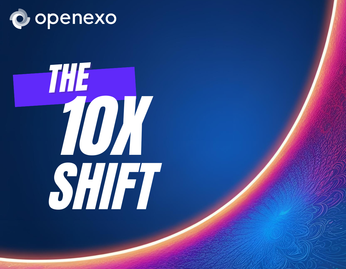
Harnessing Dashboards and OKRs in ExOs
Leverage Dashboards and OKRs to drive growth. Real-time data from Dashboards fuels agile decisions, while OKRs set ambitious goals. Amazon's success with these tools showcases their power. AI and IoT promise even greater potential for future transformations.
Steering a business in today's dynamic environment without real-time data is akin to navigating a complex maze blindfolded. Exponential Organizations (ExOs) counteract this challenge by masterfully harnessing the power of Dashboards and Objectives and Key Results (OKRs) to drive unprecedented growth and adaptability.
Dashboards serve as the heartbeat of ExOs, delivering a real-time snapshot of operational dynamics that facilitate nimble decision-making. As Exponential Organizations 2.0 highlights:
Dashboards are the internal and external presentation of the real-time information that ExOs need to operate.
These tools enable organizations to monitor and adeptly manage rapid growth and change. External Dashboards track essential engagement and financial metrics, such as Monthly Recurring Revenue (MRR), Annual Recurring Revenue (ARR), Customer Acquisition Cost (CAC), Lifetime Value (LTV), gross margin, burn rate, runway, Net Promoter Score (NPS), churn, LTV:CAC ratio, viral coefficient, Customer Retention Cost (CRC), and the magic number. Within the organization, OKRs are employed to set and monitor ambitious goals, aligning teams and propelling performance forward.
Consider Amazon's Weekly Business Report (WBR), a prime illustration of how Dashboards can catalyze success. This comprehensive dashboard tracks a myriad of metrics, guiding the company's experimental strategies. The story of Amazon Prime is an enlightening one; initially perceived as a financial risk, it turned into a triumph, largely due to its meticulous tracking through Dashboards. Jeff Bezos pioneered this approach with a digital bell system to monitor sales, underscoring the transformative impact of real-time data on decision-making.
Robert Goldberg, a prominent business thinker and investor, has successfully introduced OKRs in over 40 companies. He champions their use in revitalizing traditional businesses, asserting:
OKRs are the key to a revival of America’s declining Rust Belt companies.
The utilization of OKRs among Fortune 500 companies has seen a notable increase, growing from a mere 2% in 2014 to approximately 4% today.
The horizon for Dashboards is promising, with the integration of Artificial Intelligence (AI) and the Internet of Things (IoT) poised to revolutionize organizational operations. These technologies will enhance automation, predictive analytics, and real-time monitoring. Notably, a staggering 70% of the world's sensors currently remain unconnected, pointing to vast untapped potential for future Dashboard development. As noted:
Today, 70% of the world’s sensors are currently not networked. Therefore, their data is wasted.
The adoption of ExO principles, including the use of Dashboards and OKRs, has yielded substantial performance benefits. Organizations leveraging these methodologies report over 6.8x higher profitability, 40x higher shareholder returns, 11.7x better asset turnover, and 2.6x better revenue growth.
Exploring Key Insights and Questions
Let's delve into some critical questions about Dashboards and OKRs:
- What role do Dashboards play in ExOs?
Dashboards are essential for real-time monitoring and decision-making, enabling ExOs to manage rapid growth and change effectively.
- How are OKRs different from traditional KPIs?
OKRs focus on setting ambitious goals and tracking progress towards them, whereas KPIs often measure performance against set targets.
- How does Amazon use Dashboards in its operations?
Amazon uses comprehensive Dashboards like the Weekly Business Review to track numerous metrics and guide experimental strategies, as seen with the success of Amazon Prime.
- What is the future potential of Dashboards with AI and IoT integration?
The integration of AI and IoT will enhance automation, predictive analytics, and real-time monitoring, significantly transforming how organizations operate.
- What are the key external engagement metrics that ExOs track?
Key metrics include MRR, ARR, CAC, LTV, gross margin, burn rate, runway, NPS, churn, LTV:CAC ratio, viral coefficient, CRC, and the magic number.
Despite the clear advantages, traditional companies may face obstacles in transitioning to these systems. To make this shift effectively, they should align their Massive Transformative Purpose (MTP) with clear OKRs and invest in technology infrastructure to support real-time data collection and analysis. Challenges such as resistance to change, data privacy concerns, and the need for skilled personnel to manage these systems must be addressed. This involves fostering a culture of data-driven decision-making, implementing robust data security measures, and ensuring the availability of talent proficient in these technologies.
As automation advances, the role of human decision-makers will evolve. They will shift from data gathering to strategic interpretation and decision-making, leveraging AI insights to steer their organizations. Sectors like healthcare, education, and manufacturing stand to benefit significantly from adopting ExO principles and technologies. These sectors can use real-time data to improve patient outcomes, enhance educational effectiveness, and boost operational efficiency.
The Future of Dashboards and IoT
The integration of IoT and AI into Dashboards is not without its challenges, particularly amidst the recent tech industry layoffs affecting IoT-related positions. Yet, there are exciting developments on the horizon, such as the successful test of a roaming 5G cellular network in space by Sateliot and Telefónica. This advancement could dramatically enhance IoT connectivity, particularly in areas with intermittent terrestrial network coverage, thus expanding the scope of real-time monitoring capabilities.
Moreover, the push for sustainability and the introduction of regulations like the EU's Corporate Sustainability Reporting Directive (CSRD) are driving IoT initiatives. The increased focus on environmental, social, and governance (ESG) criteria emphasizes the need for accurate data reporting, further highlighting the role of IoT in organizational operations.
Key Takeaways
- Dashboards and OKRs are vital tools for real-time monitoring and setting ambitious goals in ExOs.
- Amazon exemplifies the success achievable through data-driven decision-making facilitated by Dashboards.
- The integration of AI and IoT promises to revolutionize Dashboard functionalities, offering advanced automation and predictive capabilities.
- Implementing ExO principles can significantly enhance an organization's performance across various metrics.
To harness the full potential of exponential growth, consider how Dashboards and OKRs can transform your organization. By aligning your strategy with these tools, you open up a world of possibilities, setting your course towards exponential success. Reflect on how these methodologies can support your organization's Massive Transformative Purpose and explore resources and tools that can aid in this journey.
ExO Insight Newsletter
Join the newsletter to receive the latest updates in your inbox.









